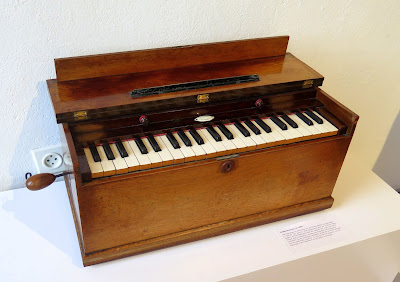A weekend
in mid-summer, sunny as it has been for the past few weeks. My own home town is
quiet, deserted. People have gone off on holiday to places far and near, but
mainly far. I love the relaxing pace which is always a characteristic of the summer
vacation. Nevertheless, because of lack of people to socialize with – no choir,
no choir practice, absent friends – a bit of entertainment in the weekend is
always welcome.
Flowers on the railings of the bridges
The Tower of the Old Church
Bric-a-brac on one of the bridges
Saturday afternoon
I went to Delft, a remarkable and beautiful jewel any time of the year, but on
Saturdays in summer there is the added attraction of the antiques market along
the picturesque canals. I love to stroll there, hunting for hidden treasures
which, when found, are often too expensive to buy anyway. Of course there is plenty
of bric-a-brac too, and things which I still have in my own house and are now considered
cute and almost antique! The festive atmosphere attracts me, as it does many
others. The bridges and street lamps are decorated with hanging baskets, bursting
with colour, reflected in the water of the canals.
A stall on a canal and a stall round the Old Church
Bric-a-brac along a side canal
The Tower of the New Church and the Town Hall with the red wooden shutters
The market stalls go on and
on. Besides, Delft houses very interesting and specialized shops, a famous museum
housed in a medieval palace, two very big and splendid churches, the Old Church
and the New Church, open to the public. The New Church is on one end of the
large open market square, opposite the Town Hall on the other end. Alongside
the square are many restaurants as well as rows of shops selling Delft Blue,
the famous china and pottery, some fake, some original and hand painted. The
latter come at a price and are popular with our many Asian tourists.
The tower of the New Church facing the Market Square and the Town Hall
Tea shops, sidewalk
cafes, restaurants, Italian ice cream parlours, they all offer refreshments to
the weary browser. And last but not least there is the flower and farmers
market offering local cheeses, the most gorgeous bouquets, bread, fish, and of
course vegetables. I only went for the afternoon, which I usually do, but again
regretted not having gone for the day as Delft is so charming and has much to
offer.
The Hague
On Sunday
afternoon I repeated the exercise by going to The Hague which also boasts an
antiques market on Sundays during the summer months. Here no canals, but mature
trees on the Korte Voorhout, a part of the Hague flanked by embassies and former
palaces and grand houses, temples of art and stately buildings. The antiques on
offer belong to a more expensive segment and are really most interesting. Sometimes
one can find a bargain, but it is a reassuring thought that most things are not
within my range. Nevertheless it is a feast to browse here.
A nicely shaded market
A woman surrounded by well-meaning friends trying on a vintage fur coat in a heat wave!
At present
the second attraction is an exhibition of the most amazing sand sculptures along
the Lange Voorhout by international artists. Normally the grass under the double
row of trees on both sides of the walkway in the middle is a well looked after,
neat green lawn. However, because of the persistent drought, the lawns are a
straw coloured yellow and covered with brown leaves. The heat comes with a vengeance.
Some of the sand sculptures
Frida Kahlo and Diego Rivera
The
sculptures are amazing. In spite of the beach so nearby, they are made with
river sand. I am quite ignorant for did not know until now that river sand,
which is brought in for the sculptures, consists of square grains, whereas sand
from the beach is round and so useless for building sculptures. Apart of course
from the sand castles built on the beach itself, which are washed away with each
new tide, and so won’t stay intact for more than 6 hours.
A young harpist playing next to a sand sculpture
"Le Flaneur" on the yellow lawn
Before
going back home I enjoyed a drink in the shade of the majestic trees, wondering
if am considered just as outdated as apparently many of my possessions.





































































